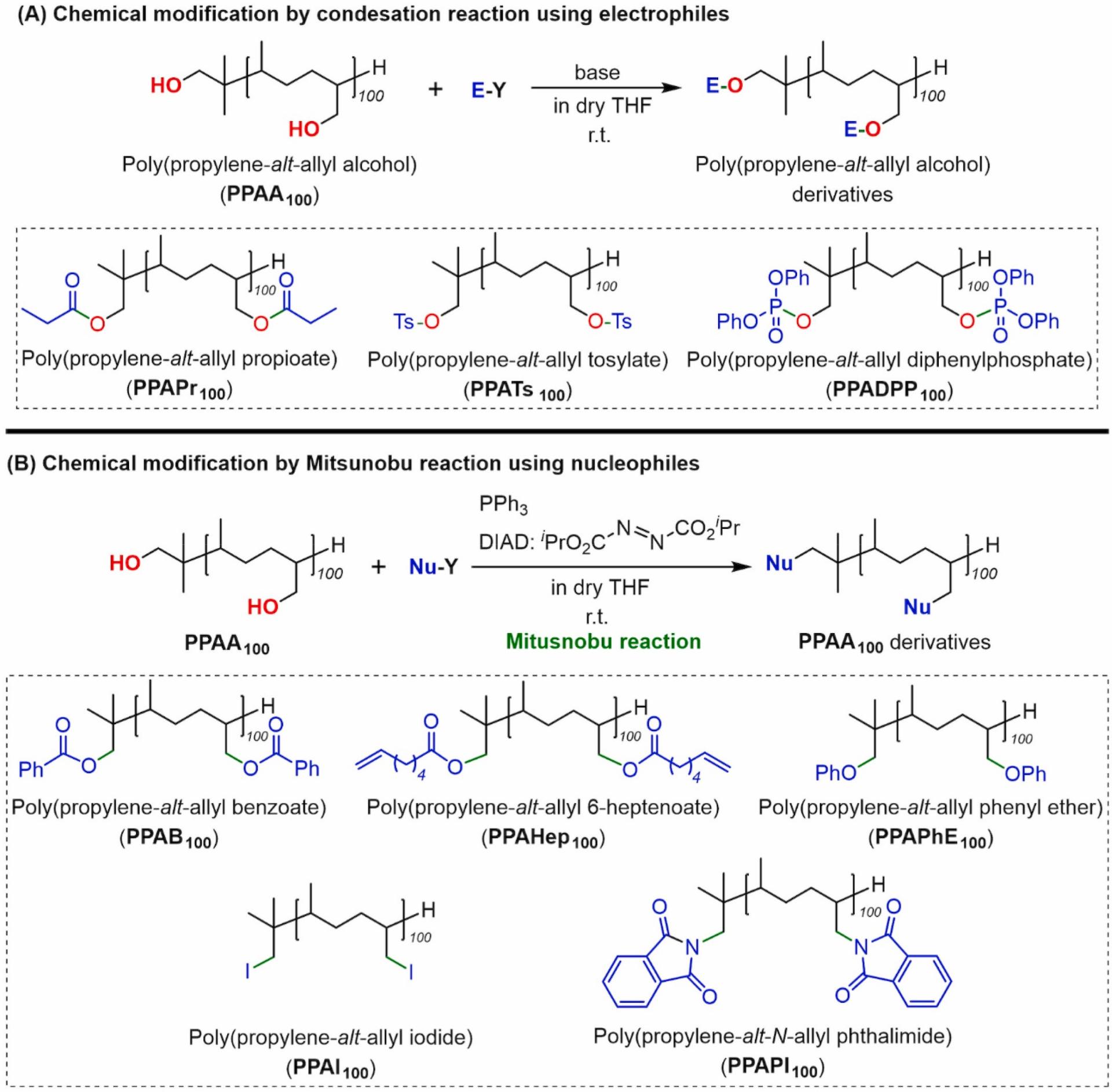Recently, Prof. Yougen Chen's team published a research paper entitled "Post-polymerization modification of poly(ethyl sorbate) leading to various alternating copolymers" in Polymer. Yongyao Lei, an undergraduate student at the Institute for Advanced Study (IAS) of Shenzhen University is the first author, and Prof. Yougen Chen is the sole corresponding author.
In this work, a polar conjugated diene polymer, poly(ethyl sorbate), was prepared by organocatalyzed group transfer polymerization, and its derived product (PPAA) obtained by hydrogenation and reduction was chemically modified. Eight novel alternating copolymers that are not accessible with general polymerization methodologies have been synthesized, providing a new route for the synthesis of accurate alternating copolymers.

Figure 1.Schematic diagram of main steps of synthetic route in this work.
The post-polymerization modification of the polymer includes its condensation reactions with three reactive electrophiles and its Mitsunobu reactions with five nucleophiles to obtain eight unique head-to-head alternating copolymers which possess a fixed propylene structural unit and an allyl alcohol derived monomeric unit, such as allyl ester, sulfonate, phosphate, ether, halide, and imide.

Figure 2.Syntheses of alternating copolymers by post-polymerization modification ofPPAAvia condensation and Mitsunobu reactions.
In this work, the glass transition temperatures of different alternating copolymers are in a broad temperature range according to the different incorporated side groups. Polymers with non-crystallizable soft alkyl side chains have lower glass transition temperatures, while other polymers with relatively rigid aromatic and halide side groups have higher glass transition temperatures. This side chain effect on the glass transition temperature has been a common phenomenon for most of polymers, because the inter-chain interactions are following the order of polymers with hydroxyl group > aromatic and halide group > non-crystallizable soft alkyl side group. In addition, the decomposition temperatures of different alternating copolymers also show great differences.
This work was financially supported by the Pearl River Talents Plan of Guangdong Province and the Shenzhen Science and Technology Research Grant.
Paper link: https://doi.org/10.1016/j.polymer.2022.125538


